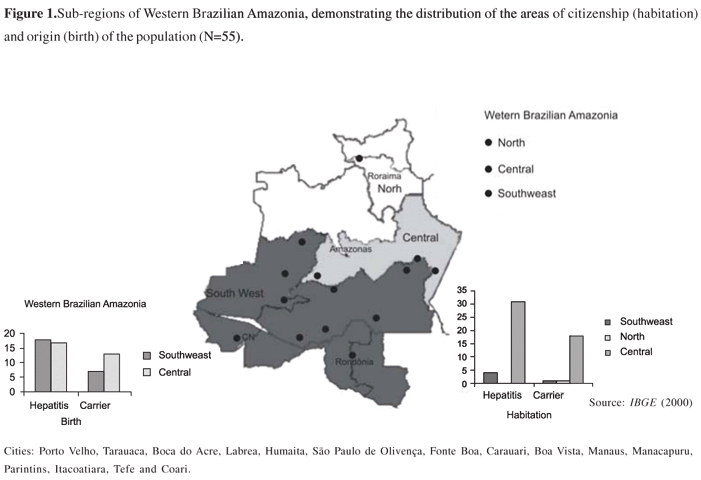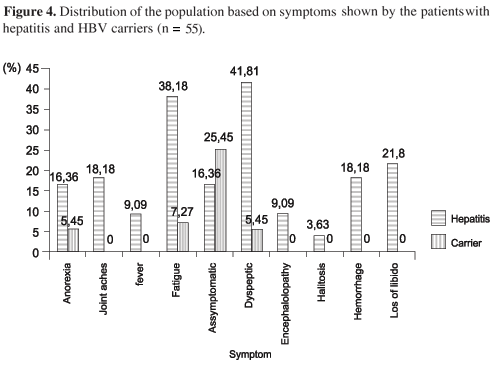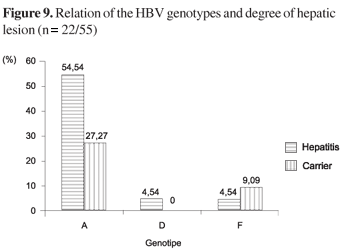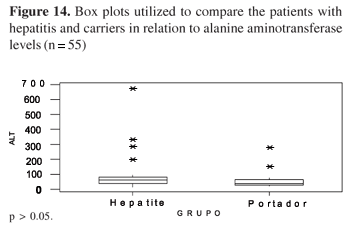The present study was conducted with 55 patients native from western Brazilian Amazonia, who were HBV-DNA positive after seroconversion of HBeAg. It is a descriptive case study, with the patients separated into two groups: with hepatitis and without hepatitis on histological examination. The aim of the present study was to describe the clinical and molecular characteristics of patients who are chronic carriers of HBsAg. The prevalence of hepatitis was 63.64%, with a predominance of males (41.82%) and a mean age of 42.5 years, occurring mostly in natives of the southeast sub-region (32.73%). Time was a variable proportional to the course of the disease and the most frequent symptoms were: dyspepsia, asthenia and loss of libido with the majority of the patients having history of prior contact with HBV or positive family history. Splenomegalia was the most frequent sign (40%). Among the tests, platelet count, serum albumin and prothrombin activity were significant in the diagnosis of hepatitis. Alpha-fetoprotein was greater in patients with hepatitis, and hepatocellular carcinoma was detected in 3.63% of the patients with hepatic cirrhosis. Three types of HBV genotypes were diagnosed: A, D and F in the samples amplified for gene S. Genotype A (AA) was observed in 54.54% of the cases with hepatitis, in contrast to other studies showing the predominance of genotype F in this region. We observed mutations in 36.36%, with a predominance of the mutations in the core promoter region (31.81%), due to the greater prevalence of genotype A in this study.
HBeAg-negative chronic hepatitis B; western Brazilian Amazonia; mutations

















